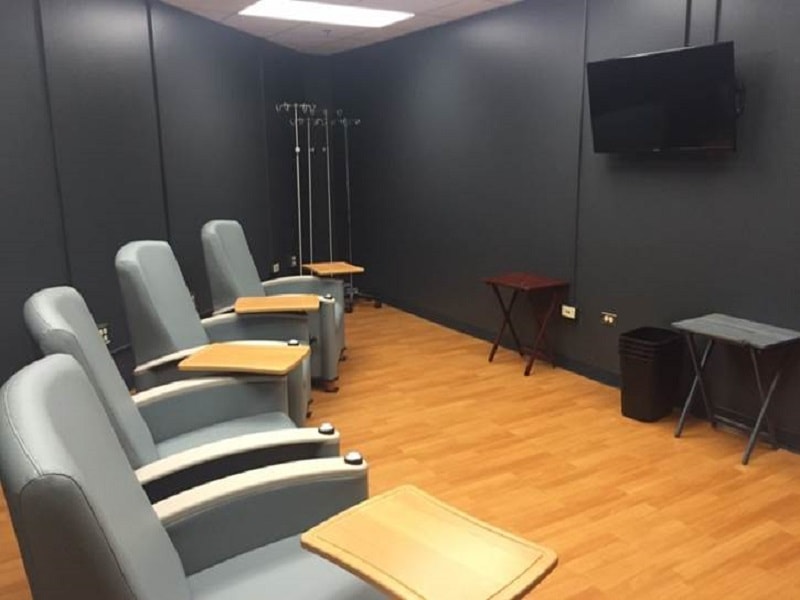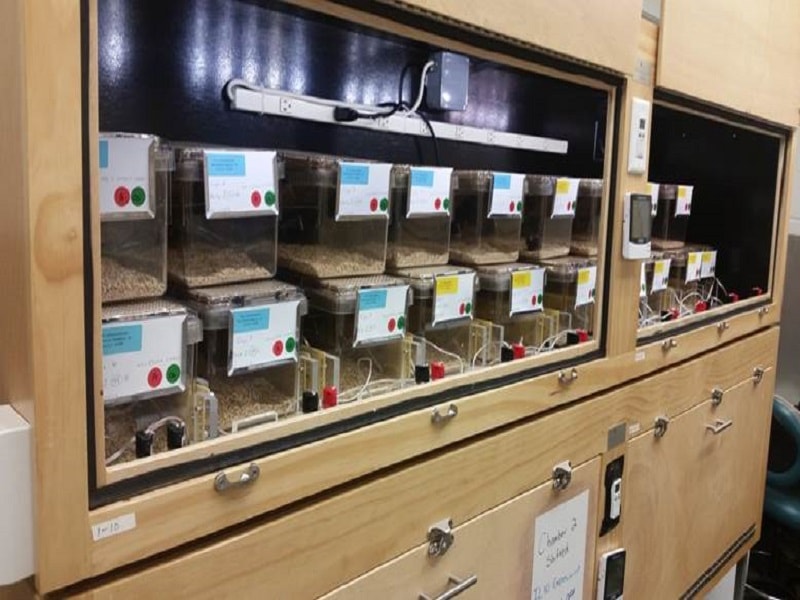If samples in the biorepository are not sufficient to address specific scientific questions, the center will provide researchers with the ability to investigate innovative hypotheses by conducting studies in our facility. At the conclusion of the study, investigators will be provided with biospecimens to evaluate study-specific outcomes.
Below are examples of procedures that are routinely conducted in our lab; but other feasible protocols will also be considered.
Human models

Human studies will be conducted in the Center for Clinical Chronobiology, which is a 1,000-square-foot facility that is designed to conduct circadian research in humans. The phase assessment room (and attached bathroom) is designed for collecting blood, saliva, and other biological samples in continuously dim light (<5 lux) from up to four reclined subjects at the same time. Experienced nursing staff collect the samples in a uniform method from each subject.
Circadian assessments
- In lab blood and saliva collection
- Dim light melatonin profiles
- Circadian gene expression in PBMC
- Wrist actigraphy
- Questionnaires
Circadian manipulations
- Administration of chronotherapies (e.g., Retimer)
- Recruitment of day shift workers and night shift workers
Alcohol administration (at home or in laboratory)
- Chronic consumption
- Binge consumption
Rodent models

Rodent studies will be conducted in our circadian rhythms research laboratory, which is a ~350-square-foot space dedicated to circadian rhythms research. The facility houses six light-tight chambers designed for circadian rhythms research outfitted with beam breaks or wheel running activity monitoring systems to assess motor activity.
Circadian assessments
- Spontaneous motor activity
- Wheel running behavior
- Circadian clock gene expression
- Ex vivo monitoring of circadian rhythms
- Per2::Luc Mice
Circadian manipulatons
- Light/dark shifting
- Altered feeding patterns
- Genetic manipulation of circadian rhythms
- Whole animal Clock∆19 mutant mice
- Whole animal Per1/2 double knockout mice
- Intestine-specific BMAL1 knock out mice
Alcohol administration protocols
- Nanji diet
- Lieber-DeCarli diet
- Nanji diet + Alcohol binge (gavage)
- Alcohol in water
Other services
- Circadian gene expression
- Organoids may be generated from including intestine, pancreas and liver
